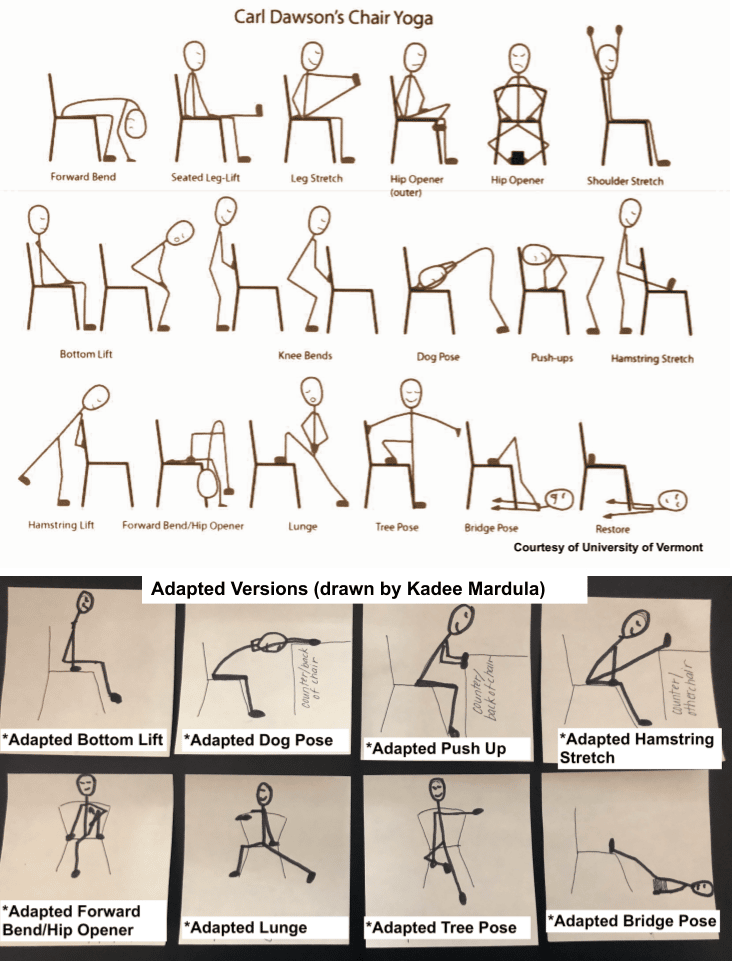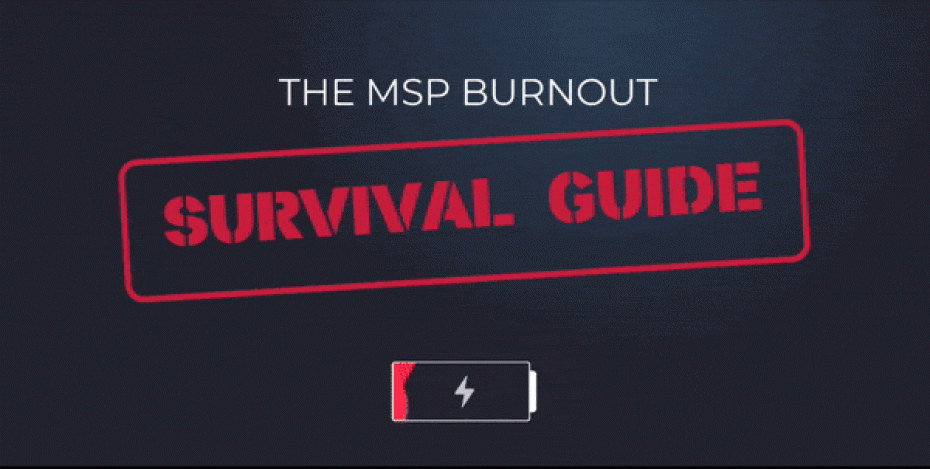Now more than ever, it’s crucial for MSP owners to be mindful of burnout and to help their teams address it proactively.
While it’s been a recognized term among mental health professionals and those in high-stress industries for years, “burnout” has taken on new prominence and meaning during the pandemic. Case in point, searches for “how to leave IT for goat farming” have skyrocketed the past two years.
With employee burnout reaching “frighteningly high levels,” and even playing a role in the “great resignation,” it’s crucial for MSPs to be mindful of how they and their staff are doing and to be ready to address warning signs proactively.
To help, we’ve compiled key takeaways from a MSP Live Chat we hosted last year with guest Heather Johnson, COO of MSP software company Gozynta and creator of the ebook “The MSP Self-Care Guide to 2021.”
You can watch the full recording of that chat here. This guide covers highlights from that discussion and collects even more resources.
Here’s what we’ll cover:
- What burnout is, officially
- How to tell when someone is suffering from it
- Common causes of burnout for MSPs
- Tips MPS owners and everyone else can use to fight burnout
- Where and when to catch our next MSP Live Chat
- And more
Important note: Before we dive in, if you, someone you’re close to, or someone you work alongside is struggling with burnout and has had that “over it” feeling lately, don’t wait to talk with someone and get help.
This guide will provide you with a plethora of good advice and information, but another list to check out is Richard Tubb’s Mental Health Resources for MSP Business Owners. This is a topic near and dear to Richard’s heart, and he’s incredibly open with his own experiences with depression. If you’re in a bad place, consider reaching out to him or others. Whatever you’re dealing with, big or small, please remember you’re not alone.
First, what is burnout, really?
In the 11th Revision of the International Classification of Diseases (ICD-11), a global diagnostic tool maintained by the World Health Organization (WHO), burnout is recognized as an “occupational phenomenon” and defined as “a syndrome conceptualized as resulting from chronic workplace stress that has not been successfully managed.”
The ICD-11 goes on to explain that burnout is primarily characterized by three things:
- Exhaustion or energy depletion
- Increased mental distance from work, or feelings of negativity or cynicism about work
- Decreased professional efficacy
Interestingly, WHO states that their definition of burnout is only meant to apply to work and not to any other areas of life.
However, it’s not all that hard to understand why we need a term specifically for unmitigated workplace stress when you take into account the latest stress research from The American Institute of Stress that puts “work” as the third-biggest stressor for Americans.
And in the spring of 2020, a global study of more than 2,700 employees found that over half of all people are more emotionally exhausted since the outbreak of the pandemic.
Just as important as being aware that feelings of exhaustion at work (aka burnout) are on the rise is being aware of the signs so that you can get ahead of or manage it.
Signs that someone is suffering from burnout
According to the Mayo Clinic, if you’ve started noticing any of these feelings at or about work, they could be symptoms of burnout as a result of job place stress:
- Increased cynicism or criticism
- You don’t want to go to work (even if your commute is just to the couch now) and you don’t want to get started with work
- Irritability or impatience with the people you work with
- Lacking the energy to be as productive as you used to be
- Trouble concentrating
- Sudden lack in satisfaction from your achievements
- Feelings of disillusionment
- You find yourself using food, drugs, and/or alcohol to feel better (or stop having feelings) about work
- Your sleep habits have changed for no other discernible reason
- You’re troubled by new, unexplainable headaches, stomach or bowel problems, or other physical issues
If you started nodding in agreement as you read the above list and you’re also dealing with some of the scenarios we’re going to explore in the next section, chances are good that burnout is affecting you.
5 common causes of burnout for MSPs
Aside from the regular day-to-day stuff that causes stress across all industries (such as dealing with difficult clients and vendors, etc.), these are some situations that happen often within MSPs specifically that can ramp up stress and eventually cause employee burnout:
1) Abusive or unprofessional clients
IT work can be a grind. Working with clients who acknowledge and appreciate your expertise can make it all worthwhile. Working with clients who don’t can push staff over the edge. In the worst cases — where clients overstep professional boundaries, yell at staff, and/or don’t follow recommendations — problem clients can easily be more trouble than they’re worth.
Not everyone is in a position to “fire” bad clients, but it’s important to regularly audit your client list, identify clients who are the biggest drains on resources and morale, and come up with an action plan for addressing those issues. (Be sure to include your team in that process, too.)
For more on how to evaluate your clients (and even walk away from the worst), see our guide on How to Break Up with Bad Clients.
2) Underpowered or misaligned technology
It takes a lot of technology to manage systems for multiple clients. It takes even more technology to make sure all your own systems and people are working together in a way that best serves those clients.
All that interconnected technology makes for lots of opportunities for things to get out of sync, get outdated, break, and underperform in other ways that totally gum up the works.
If working with broken down or misaligned technology tools is the rule instead of the exception at your MSP, you better believe the employees whom it impacts the most are going to go from simply stressed to totally burned out in no time.
3) Lack of organization, documentation, and automation
Employees spending half their day looking for a resource they need? Employees coming to you to interrupt your day to find a resource they need?
Or is your team wasting time completing the same repetitive tasks day after day? And are they still doing them just differently enough that it’s hard for the next person to pick up where they left off?
Sounds like you need to do some organization, standardization, and documentation. With these things, you can eventually start automating some of your processes to generate more revenue from the same workload.
But without them, you can count on employees getting tired of never having the resources they need and doing the same, boring work day in and day out.
In other words? You’ll end up with employees who are burned out and checked out.
4) Poor communication
Especially for teams that were forced to go remote unexpectedly when COVID-19 hit, lack of communication tools and communication strategies are rampant in the MSP industry.
A lack of purposeful communication can be even more stressful for workers who feel overwhelmed with their workload or isolated due to the pandemic.
Tools like Teams and Slack can ease the technological constraints around team-wide communication, but you as the manager must also put in the effort to communicate effectively and regularly to keep your team informed and engaged.
5) Unclear/unrealistic roles or expectations
In smaller MSPs especially it’s almost expected to see workers taking on wildly different roles depending on what’s needed at that very moment.
Lead just submit a form from the website? Quick, have whoever isn’t in the field today give them a call back!
It’s not that the above scenario is wrong at all — as long as it’s explicitly clear who is responsible for what, and when.
As the saying goes, everyone’s job is no one’s job.
When roles and expectations aren’t made clear, lots of important jobs go overlooked or get done at the last minute. This understandably can be incredibly stressful for owners and employees alike.
4 tactics anyone can use to fight burnout
No matter the industry, burnout happens when workers are under a consistent, high level of stress.
That means preventing and fighting against burnout is, at its core, about dealing with stress.
So in this section, we’ve compiled some of the best tips for dealing with stress both in the moment and long-term to keep it from building up and, eventually, burning you out.
1) Prioritize Sleep
Despite the badge of honor that some people seem to think they’ll get when they come to work without enough sleep day after day, all they’ll actually get are a weakened stress response and poor performance.
Why?
Because sleeping for only six hours then going to work impacts your performance as if you’ve drunk a couple of beers. Just four hours of sleep makes your performance as if you’ve drunk five beers.
And we don’t know about you, but we can’t exactly get a lot of high-quality work done or effectively deal with stressful client issues after the equivalent of a pretty rowdy Friday night.
Despite what people tell themselves, it’s extremely uncommon to need less than the recommended amount of sleep.
The truth is, according to the National Sleep Foundation, most adults need seven to nine hours of sleep per night. This gives the body time to go through all the regenerative biological cycles that, among tons of other benefits, reset your stress response so you wake up calm and with the energy you need to deal with whatever stressors life and work have in store.
Yet, a third of Americans get fewer than just six hours of sleep per night.
If you’re one of them, it’s time to prioritize getting more sleep so you can better deal with and recover from stress.
How you go about getting more sleep is highly personal. Common tactics include:
- Cutting off your caffeine intake earlier in the day
- Reducing your exposure to electronic screens (which produce blue light that has been linked to a reduction in melatonin — a sleep-inducing hormone)
- Developing a bedtime routine that signals to your body and mind that it’s time to power down
See even more researched-backed tips from Healthline here.
2) Move throughout the day
Per the Mayo Clinic: “Exercise in almost any form can act as a stress reliever.”
In any form?
That’s a relief for the non-marathon runners among us!
If you’re like the majority of MSP staff and owners in that you’re used to being glued to your office chair for hours on end, try to start moving more often by introducing 10-minute walks after each main meal of the day.
Not only has this been scientifically proven to improve health (such as in this diabetes management study), walking for a total of 30 minutes each weekday aligns perfectly with the Department of Health and Human Services’ recommendation to get in at least 150 minutes of moderate aerobic activity (which includes brisk walking) every week.
In addition to these walks, you can also get moving throughout your busy workday without even leaving your office chair!
In Heather Johnson’s self-care ebook “The MSP guide to 2021” that we mentioned above, she introduces the concept of “chair yoga,” which is actually less intimidating than it sounds.
Chair yoga isn’t about mastering a bunch of complicated, hard-to-get-into moves — it’s simply about taking a break, taking a breath, and doing some awesome stretches in and with support from your office chair.

Source: Oregon Adaptive Sports
Chair yoga — or whatever kind of yoga/stretching you decide to do — is a great way to get your heart pumping and introduce some quick and low-impact exercise into your day.
Exercise relieves stress in numerous ways: Increasing your endorphins, distracting you from thinking about stressors, and even wearing you out so you can get more of the number-one stress reducer — sleep!
Sounds like it’s time to get to steppin’.
3) Learn to breathe with intention
If you’ve never taken a yoga class, this phrase might not make sense to you just yet.
I mean, you’re already an expert at breathing — and it doesn’t take any intention at all, right?!
That’s exactly the point.
When you take time to breathe intentionally instead of automatically, you can evoke something called the “relaxation response.”
Backed by Harvard Medical School, the relaxation response is “a state of profound rest” that can turn off the “fight or flight” stress response that your body can get trapped in if you aren’t mindful about reducing stress in order to turn it off.
Breathing mindfully is a key way to put your body into this relaxation mode, whether you practice it on its own or in combination with other de-stressing activities such as meditation or the chair yoga we explored above.
To breathe with intention:
- Turn off or move away from distractions.
- Sit or lie somewhere comfortable.
- Put one hand on your stomach and the other on your chest.
- Take a deep breath through your nose and let your stomach push your hand out. Focus on your hand on your chest and try not to let your chest move.
- Form your lips into a circle (like you’re whistling) and breathe out through your mouth. Focus on your hand on your stomach and how it moves as the air goes out.
- When you start thinking about work, focus back on the process of breathing.
- Do this for five minutes (or longer) at regular intervals throughout the day and as needed when dealing with an especially stressful situation.
Heather shares more information about this process when you click on the breathing icon on this page of her business website.
And, you can also look for “meditation,” “mindfulness,” or “guided breathing” apps if you want to get more high-tech with this stress management strategy.
4) Don’t just make resolutions, make habits
We don’t have to tell you and your New Year’s resolution that habits are hard to form.
But what we can tell you is there’s a new model in town when it comes to making new habits stick.
It’s James Clear’s framework for forming new habits, which builds on the “cue, craving, response, and reward” stages of a habit popularized by Charles Duhigg’s famous The Power of Habit book.
James’ framework for thinking about each of these stages as actions looks like this:
- To cue a desired habit, make it obvious
- To crave a desired habit, make it attractive
- To respond and take action on a desired habit, make it easy
- To reward action on a desired habit, make it satisfying
Here’s how this way of thinking could be applied to creating a new habit of walking after every meal:
- To cue taking a walk after every meal, make it obvious with a digital alarm or notification system that sends you a reminder around mealtime every day
- To crave taking a walk after every meal, make it attractive by eating your dessert on your walk or investing in walking shoes you love wearing
- To respond and take action on taking a walk after every meal, make it easy by having your shoes by the door and blocking out your calendar for at least 15 minutes after every meal
- To reward yourself for taking a walk after every meal, make it satisfying by marking each walk off on a physical calendar and giving yourself a “prize” each time you complete a month
Even once you start working within this framework to form healthy new de-stressing habits, don’t get down on yourself if it takes longer than expected to become your new norm. It can take people anywhere from two to eight whole months to change their behavior for good.
Tips for MSP owners in particular to prevent burnout
On top of the above tactics that each of us can act on to prevent burnout in our own lives, here are some high-level strategies MSP owners can use to create a healthy workplace.
1) Be an approachable manager
Sometimes stress at work is inevitable. An employee is bound to get a little stressed out when helping a client through a multi-day security situation.
However, some stress is self-imposed. The same employee who dealt with the above situation might wind themselves up further and remain in a high-stress state because they’re nervous about asking you if they can take a half-day of their vacation time to de-stress.
When you can, avoid being the reason an employee keeps themselves at a high stress level. Encourage your staff to approach you about anything that’s causing them heightened or prolonged stress.
No, we’re not advising that you give everyone time off every time they feel a little stressed about their job. We’re advising that you make yourself available as a resource and an outlet where employees can come to find ways to deal with workplace stress before they get burned out.
2) But, also be a healthy example
Whether you want to be or not, as an MSP owner or manager you’re the example of ideal employee behavior.
That means it’s up to you to be a good example.
So when we say to “be approachable” we want to temper that with another suggestion: Don’t be approachable all the time.
Being stressed around the clock is a way to get burned out on work. And being available around the clock is a great way to really pile on the stress.
Take time off. Learn to delegate within your business so that you have time to step away to go on vacation, get a healthy night’s sleep, exercise, and whatever other de-stressing activities work for you.
Ironically, maintaining this healthy work-life balance will actually make you more approachable when you are at work because you’ll be able to face challenges with a stress-free and level-headed mindset.
3) Build a team culture that’s focused on supporting each other
It might have been popular to make fun of team-building activities pre-pandemic, but now that many of us have been working from the confines of our homes without much friendly human contact for about a year, team building is a necessity.
Especially if your team is new to this whole remote thing, it can be hard to come up with ways to keep everyone connected, engaged, and part of a strong culture that prioritizes employee health and happiness.
If you need a little support in keeping your culture strong while we ride out this pandemic, check out this comprehensive, sortable list of digital-first team-building activities. With almost 40 different options, you’re bound to find a few fun things to do whether it’s for Monday-morning standup or Friday-afternoon happy hour.
4) Provide resources and incentives for self-care
Earlier we talked about being approachable to help employees deal with stress, but of course you can’t be expected to take all that on your shoulders and never burn out yourself.
So take some of the load off by readily providing resources and incentives to inspire your staff to prioritize their self-care so they can effectively deal with stress and avoid burnout.
The kinds of resources and incentives that work for your team will depend on a lot of factors — your size, your budget, your culture, and more. However, here are some ideas for teams large and small to get the ideas flowing when you’re thinking about how to empower your staff to manage their stress:
- Try a well-known “employee assistance programs (EAP)” like Blunovus that connects employees to a variety of mental health resources
- Pay for employee subscriptions or sign up for an organization-wide subscription to self-care apps such as Headspace
- Instead of the old gym membership reimbursement, buy everyone a step-tracking app or device and battle over who can get the most steps in a day
Aside from bringing in outside resources, we highly recommend also finding ways to incentivize self-care through your actual daily business processes.
Dan Komis, owner at TechRunner IT, shared in our MSP Live Chat Slack group (which you can join by attending one of our chats!) how he worked with an employee to set up a process that helped that employee achieve professional and personal self-care goals using salary-based incentives.


To see more ways that Dan has learned to achieve business goals by driving better habits, download the “Creating Better Habits” guide he graciously provided us to share with our readers.
Defeat MSP Burnout + Keep Moving Your Business Forward
Burnout is the result of stress that goes unmanaged.
And when you think of it that way, it seems a lot more understandable, manageable, and even preventable than some big, scary headlines can make it sound.
Now that you know what professional burnout means, how to identify it, why it may be happening in your MSP, and what tactics you can use to fight it — there’s no reason not to put resources, incentives, and even processes in place to take care of yourself and your staff in these unprecedented times.
With stress managed and burnout banished, you can keep moving your MSP business forward by attending our MSP Live Chat series, where you’ll be sure to learn valuable advice and make lasting connections with other MSPs just like yourself.
And remember you can visit our back catalog to catch the engaging chat we had with Gozynta COO Heather Johnson that inspired this guide, as well as register for upcoming MSP Live Chats all on our MSP Live Chats Community Events page.







